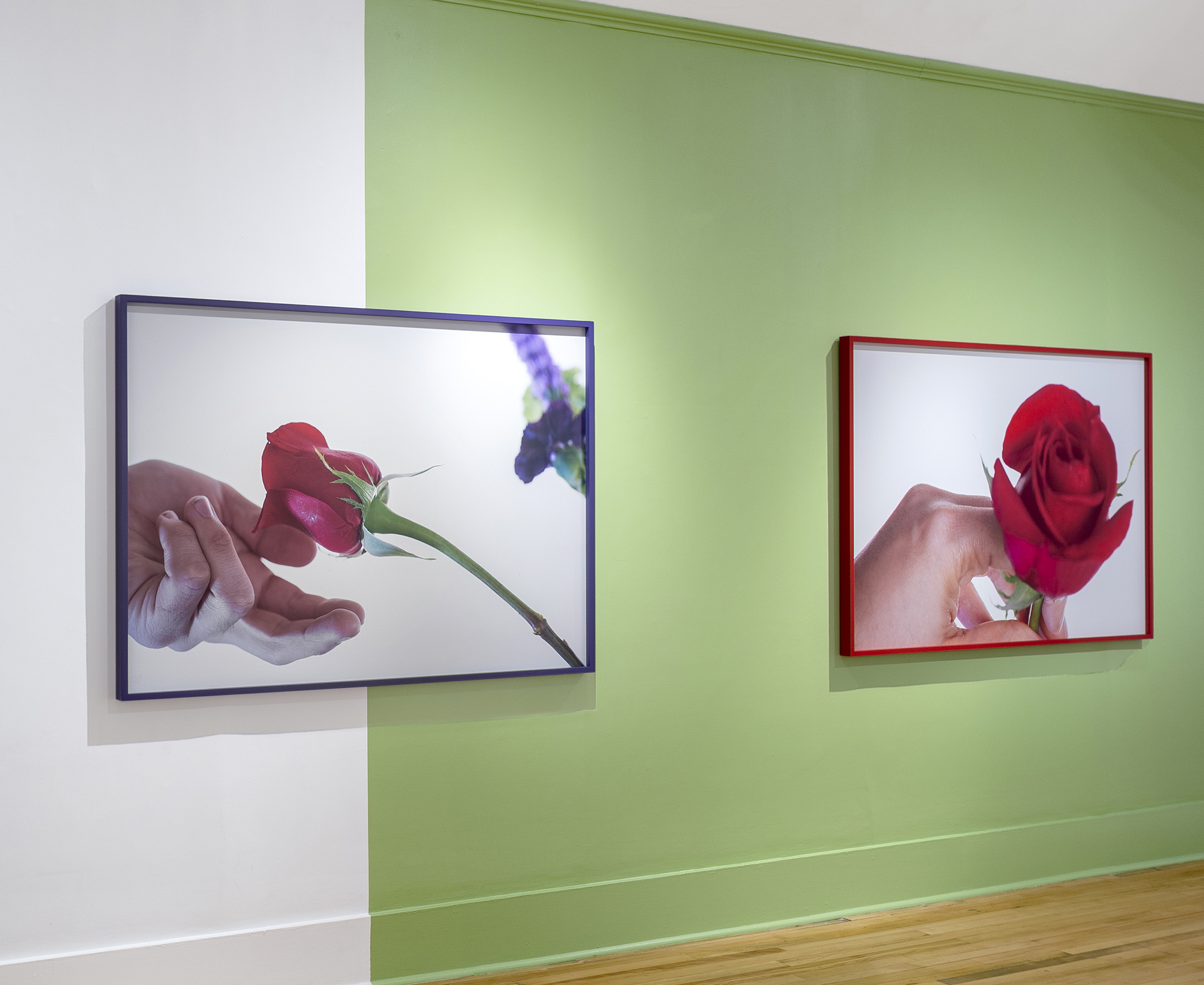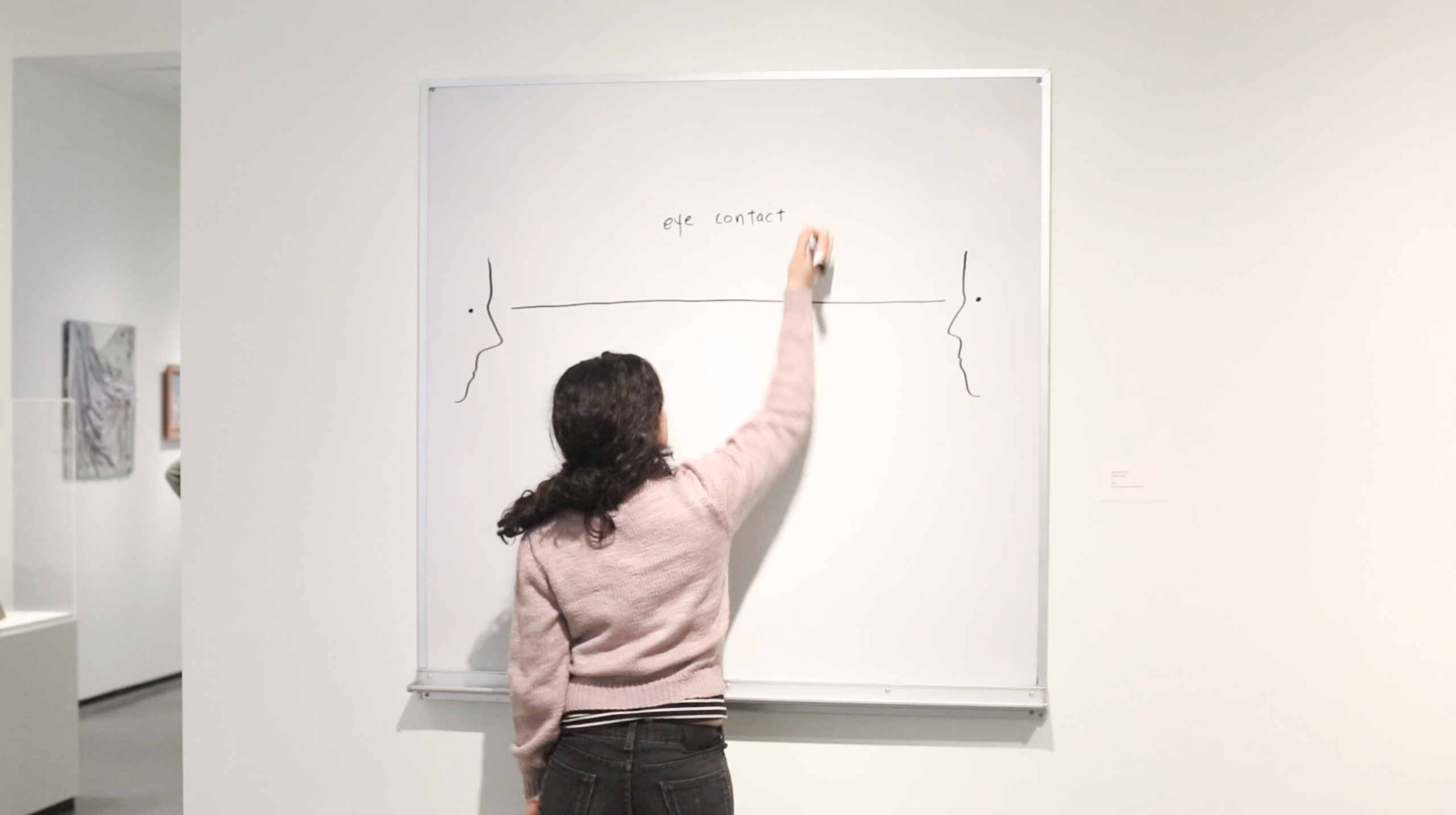Practice and Community: A conversation with OUT LOUD Theatre
Kira Hawkridge
Interview by Soeun Bae
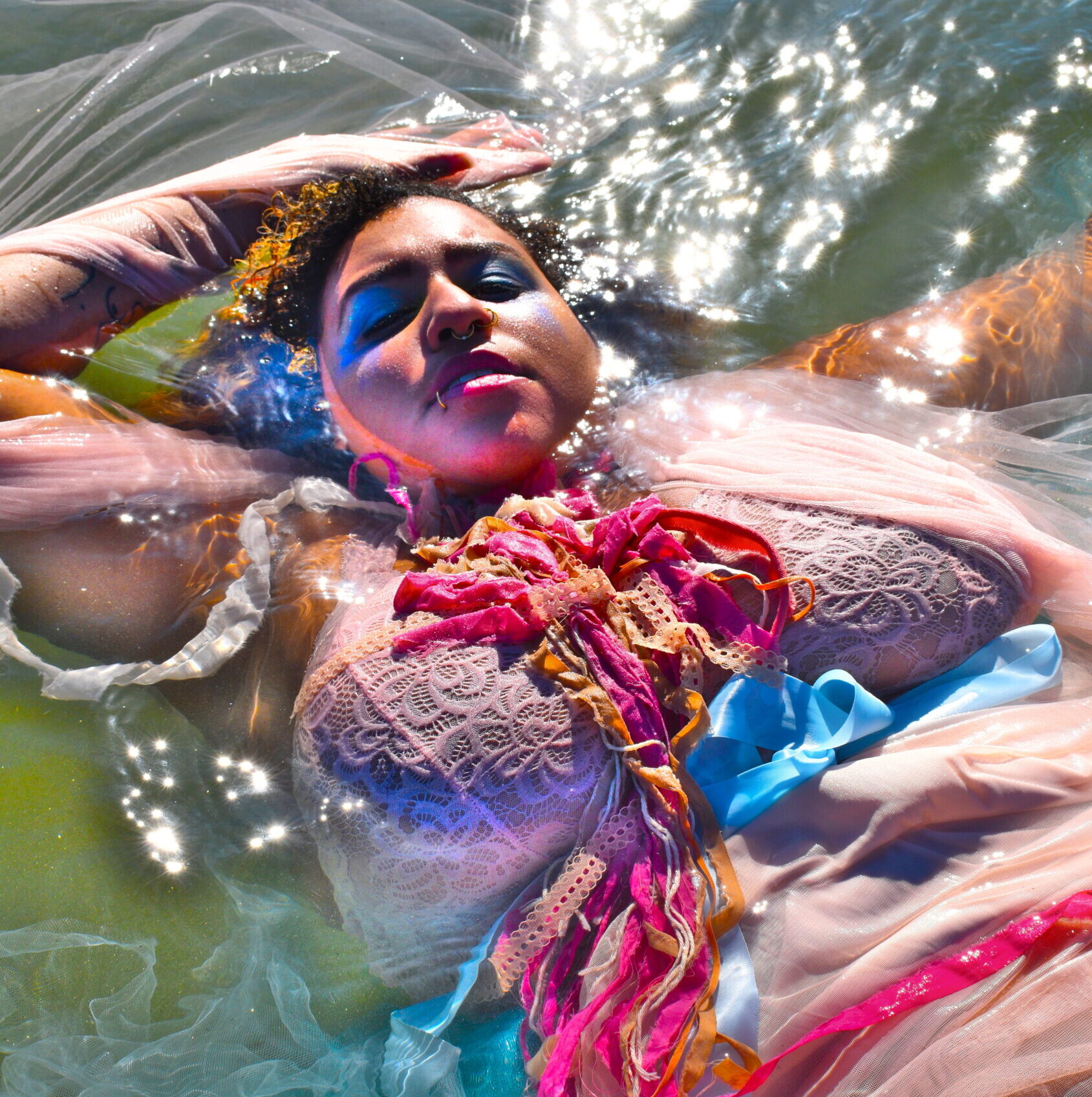
Marc Tiberiis II, "Creation Myth" Featuring Daria-Lyric Montaquila, 2021
Kira Hawkridge is the artistic director of OUT LOUD Theatre, an experimental and avant-garde collaborative based in Providence, RI. Their methodology emphasizes collaboration and experimentation through movement to create an immersive and imaginative production. This conversation explores the creative process and practices of Out Loud, specifically their approach to community building and collective creation through movement and writing. With an emphasis on non-hierarchical community and improvisational prompts, Hawkridge gives insight into the unique process that builds up to the magical productions of the ensemble.
Soeun Bae [SB]: We first met through a workshop that you led for Amy Devers and Sara Ossana’s class (“Story Exploder,” a Set Design course at the Rhode Island School of Design). I remember you led some improvisation exercises but our group was mainly non-performers.
Kira Hawkridge [KH]: Your group’s workshop was the first thing that we got to do in our new space. So it felt very special to have y’all come in and participate in one of our core exercises. As a predominantly performance based company, we love to look at things through the lens of other disciplines. Looking at it through your lens in terms of design was really fascinating. Sara and I talk a lot about the collapsing of the spaces between bodies and what influences and informs the other. Like a symbiotic relationship between the environment and physical life. So to have a group of designers engage with this exercise was really just so wonderful.
SB: Do you notice anything different about designers’ engagement with the material?
KH: I was so struck by the ingenuity that came into play and how different elements were in conversation with each other. If there were other objects that were nearby, they were immediately incorporated. Structures that were left behind felt very prevalent and exciting, then someone could come over and physically interact with it. Someone put a bunch of the spheres inside of their shirt and then other people would come and press them out. That dynamic felt really exciting because you were creating new shapes and collapsing the space between the element, object, and the body. I think this is something that definitely happens when you’re engaging with performers, but not necessarily a first group of people coming in that hasn’t had experience. But every time with design, just like that; the switch gets flipped immediately and that space is collapsed. It was very exciting to witness.
SB: I guess designers have very material approaches to objects as we generally work with physical things. Thinking about the objects as props helped in my personal engagement with the exercise. I felt that we adopted much quicker when there were objects to latch onto. What kind of exercises do you guys do within the company? Is there a practice that you guys return to?
KH Free-form discussions and writing prompts are a big element of how we work. We do movement improvs or nonverbal prompts taking a scenario or relationship paired with an element, which is what your group has engaged with in terms of using paper, light, spheres, cubes and fabric. Central elements can drive a relationship that’s just forming in terms of building a community or a more specific dynamic in terms of a script or a theme. So it’s really a process of bouncing back and forth between discussing, writing, moving, and engaging with space and then seeing how those pieces interconnect.
SB: Can you give specific examples of the writing and movement prompts?
KH: In terms of writing, we tend to approach them in terms of writing to an entity, writing from a person to a person, or from the perspective of an entity which can be in terms of of a character. But it can also be in terms of something much more expansive.
One of my favorite prompts was: writing a love letter to yourself or from yourself. I think a lot of structures live inside of a letter space. Other writing prompts are formulated based on the need of a particular project. As a guide – which is my position inside the collective – I develop what those writing prompts look like in particular.
Sometimes we’ll provide a series of words or phrases and then you choose which one stands out to you. Then just expand upon that thought and then see what’s introduced into space and then you story gather, take all those pieces and then bring them into the next round of prompts. We call it a brain dump. I wish we had a better reference, but just emptying your mind out on a particular topic. As you expand, it tends to become more specific at the same time. That duality of something expanding and also contracting while you’re moving through it is why I love writing prompts so much.

Kira Hawkridge, "Gods and Monsters" Featuring Beth Alianiello, 2021
SB: So many ideas can emerge from writing. They are both beginning points and ways to branch off from existing points. How do these exercises and practices inform the theater works that get produced?
KH: Recently, we’ve been investigating how our methodology was born from the way that we wanted to be working in space. For us, devised work means collective creation and a group of collaborators holding space, each making collective decisions moving forward. That process can be very informative in a theater space, but I think a lot of times people shy away from it and say, “Okay. well, what happens if there’s too many cooks in the kitchen?” But if you’re building that relationship from the beginning, you can lay that foundation and build up from it. How we approach things in our community, how we relate to one another, the structures that we have inside of our rehearsal space, and the exercises we choose all begin to inform what type of work we’re engaging with and creating, coming from the individual people in that space.
So if we had a completely different ensemble, the production that we would be creating from scratch would look totally different. It could be the same theme or the same elements, but depending on who is there, it’s going to wildly change that process. We spend a lot of time talking about why we do what we do, how we do it, and how to introduce each stage of it. The theater work itself or the final product is so deeply rooted in the process in which we choose to engage with.
SB: Each person of the ensemble seems like defining characters within the community. I wonder how the production would be completely different if you guys had a different set of people. So how did you guys all meet? Tell me more about how OUT LOUD Theatre came together.
KH: We started back in 2012 and it was a group of of University of Rhode Island alumni and current students. I decided to found what would become OUT LOUD, but at the time it wasn’t necessarily a grand plan to have a collective. At that point we imagined it would continue to grow ten years and hopefully beyond.
A lot of times there are really wonderful structures that exist for learning opportunities, but it’s more about finding out where you fit inside of something that already exists. We were really interested in finding and creating a space where you get to discover your own perspective and your own point of view.
SB: The continued sense of community is really beautiful. Did you guys have a different mode of practice when OUT LOUD first started? How have you guys changed throughout the ten years?
KH: It’s so funny because we’ve been looking at our trajectory as we’re coming into our ten year mark. Going back, it was almost shocking to see how early on some of our core concepts came into play. They had been there from the beginning, but they needed time for us to articulate why they were there, how they could be used, how expansive those things could be.
When we started, we were producing more traditional scripts, with a clear differentiation between the audience and the stage. Our processes were much more traditional in terms of a three to four week rehearsal process. Everyone would get a script. It was more delineated in terms of traditional positions.
And I think the deterioration of those boundaries is something that has brought us into where we are now. Now those lines are completely broken down and everyone is writing, researching, looking at visuals, talking about the design. Then in production mode, folks start to gravitate towards their most passionate zones. But the building of the world is through everyone on the same page and level and it’s also much longer. The piece we’re working on now has been in development for about two years.
So yeah, just the breaking down of how we define what theater is and what we can do. But I’m so grateful that we had an opportunity to live inside of those more traditional structures to get a footing. Then when we felt ready or we felt like we were pushing up against something, that’s when we moved into the next phase.
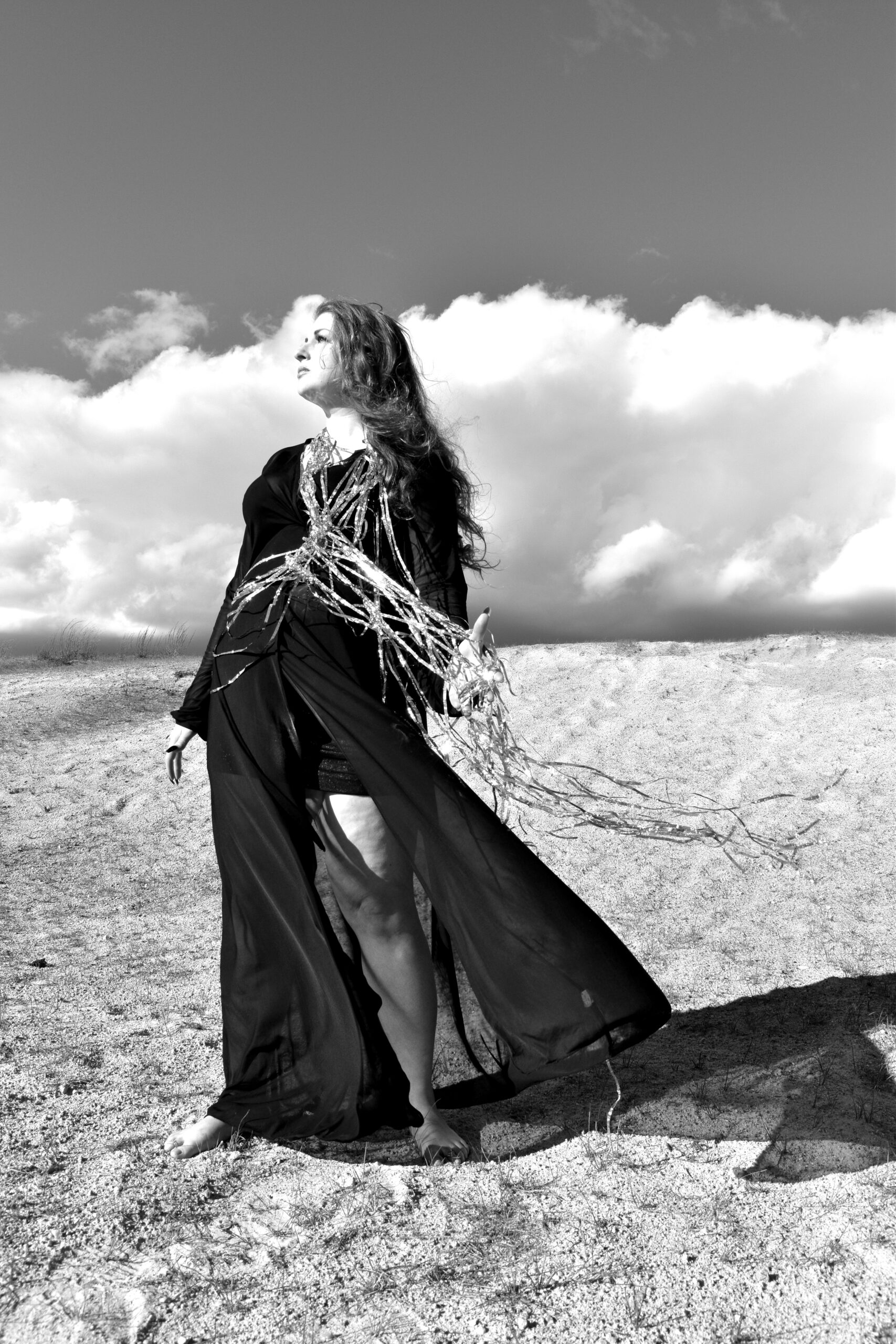
Kira Hawkridge, "The Ancient & The New" Featuring Siobhan LaPorte-Cauley, 2021
SB: The switch from traditional theater to more experimental theater happened naturally for you guys. I’m still trying to wrap my head around that idea because the definition of theater that I had before was: there’s a stage, there are performers, and there’s the audience. Experimental theater is a very new world to me because it can be so expansive. I’m curious about what makes the core thing about devised theater.
KH: At the heart of it, it’s difficult to define, and I think that’s what makes it the definition of something being experimental because it doesn’t fit neatly into a traditional structure. I think for me, experimental theater is pushing against the boundaries and the lines that have been drawn. We’ve done projects where folks have said: this isn’t theater, or we don’t know where to put you, where do you fit, how can we define what you do? We’ve defined ourselves more as a collective of artists that are building creations. They have a root in theatrical practice and performance, but it’s like self/no-self and theater/no-theater. It’s that space in between. Devised theater is just about this space that’s really difficult to define and because it’s completely reimagining or rearticulating something that we’ve had a relationship to before.
SB: You’re using theater as a method of breaking down hierarchies and boundaries, especially through movement and performing. I like that it’s not really a traditional way of thinking about breaking down boundaries and hierarchies, but through playing a roles, as you rediscover yourself and others.
KH Another really strong thread inside of devised work is that that hierarchy is either completely erased or broken down or redefined. A lot of times, theatrical structures starts from from a core and then expand. There are different rings that are all part of that shape, like the expansion into the circle versus the trickle down into the pyramid. Just different ways of looking at those boundaries and hierarchies and how they can exist but also be erased at the same time. Yeah, so there is no hierarchy, but you.
SB: You refer to yourself as a “guide” or a director. Where do you stand in that expansive bubble of experimental theater of OUT LOUD?
KH: It became evident early in the process that it was helpful for us to have someone who was looking at the big picture and hold space from that top down point of view. The ensemble could dig more into the process in a more meaningful way because there wasn’t that concern that they needed to hold the entire thing and knew that somebody was there guiding it. A lot of my relationship is to sit with the material that’s being created, meditate on it, engage with it, research it, and come back with my own work and say, ok, this is what i’m seeing from what we’ve been talking about. Let’s take that as a jumping off point and then tear it apart and add to it. I spend a lot of time curating how it’s going to be introduced, what materials we want to drop away or bring forward, what questions to ask, and how prompts are structured. I am simultaneously influencing how it’s moving forward but also giving space and room to just absorb and internalize.
SB: In a way, you’re both centering everyone and letting everyone roam free.
KH: Exactly. It’s so funny, my dad always says it almost feels like an investigation out in the wilderness. Here are your tools, this is the area we’re going to investigate, then use them, use them off. They know that there are parameters, but then it’s a choice in which you come maybe come up to the edge and say, what’s over there, let’s all go to the space. Mapping things out as a group is so helpful.
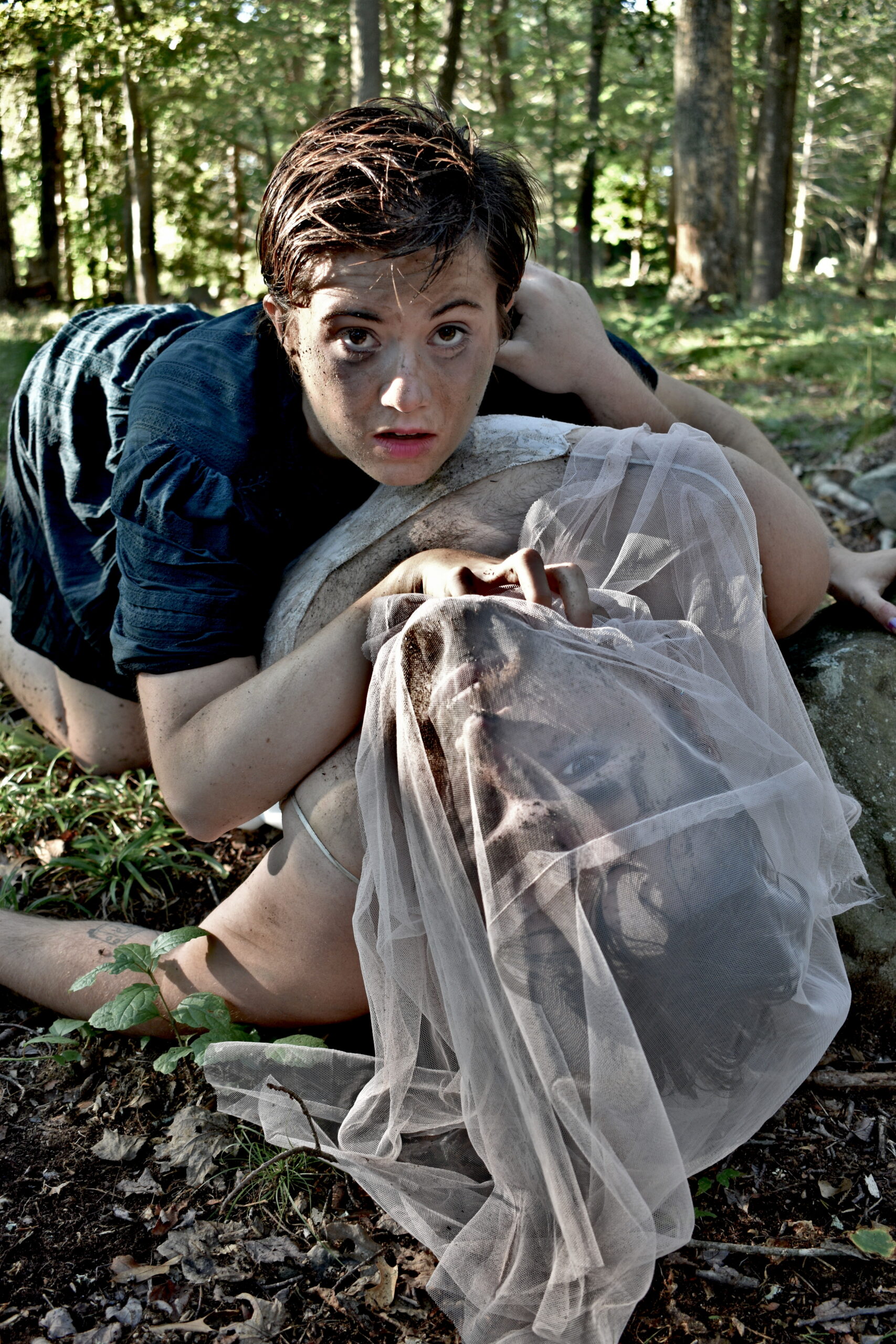
Kira Hawkridge, "Overworld / Underworld"- Featuring Emma Impagliazzo & Joshua Raymo, 2021
SB: In moving forward, can you share more information about what’s next for OUT LOUD Theatre?
KH: We are getting ready to move into our our tenth season. Since the initial shutdowns in March of 2020, we shrunk all the way down. As it happened, the ensemble really helped to develop where it is that we’re headed. We spent time on engaging with structure and process and exactly how we wanted to break down boundaries and the hierarchies, if there was any left inside of OUT LOUD. Break them down and reimagine them. So moving into our new physical space, we’re really excited to share the in-development work that we’ve been creating over the last couple of years and put that into production mode and also to be able to utilize that space to present workshops and expand and share our methodology, which we call a collective breath.
SB: Can you define what the Collective Breath is?
KH: Yes, so Collective Breath is how we define our process and method. it was definitely born through the engagement of creating productions inside of OUT LOUD. It’s essentially a guide for ensemble creation and it brings you through different stages, steps, questions, and exercises that we’ve utilized in our space that can create an environment to engage with our productions. A huge part of collective breath or the elements in our experience engaging with those elements and how folks can use them in different capacities and that can spark different creative opportunities in any given space.
SB: Is there an approximate timeline that we should keep an eye out for?
KH: We are planning to announce our Season 10 at the beginning of January. We’re engaging with with three different pieces which are currently in development. One of them is going to be a retrospective on our ten years and creating a celebration of ten years OUT LOUD, which I’m very excited to physically see that trajectory of where we started and where we are now. Another piece that we’re engaging with is called the Melting Mind, looking at our relationship to memory and creating a physical and visceral visual world for expression. I’m very excited for where things are headed and we’re really looking forward to being able to invite people into our new space and share a workshop setting with them.
SB: Wow, things are really all happening.
KH: No, it’s all happened. It’s so exciting, at least especially after coming from the whole shutdown. It feels like no time at all and the eternity.
SB: Well, thank you so much for taking time to chat about OUT LOUD!
KH: Thank you again for bringing such wonderful energy into the space. I can’t say it enough. I was so grateful that you all were the first group that came in and when our ensemble came in after I could definitely feel that your energy. It was a great moment of play for all of us.
